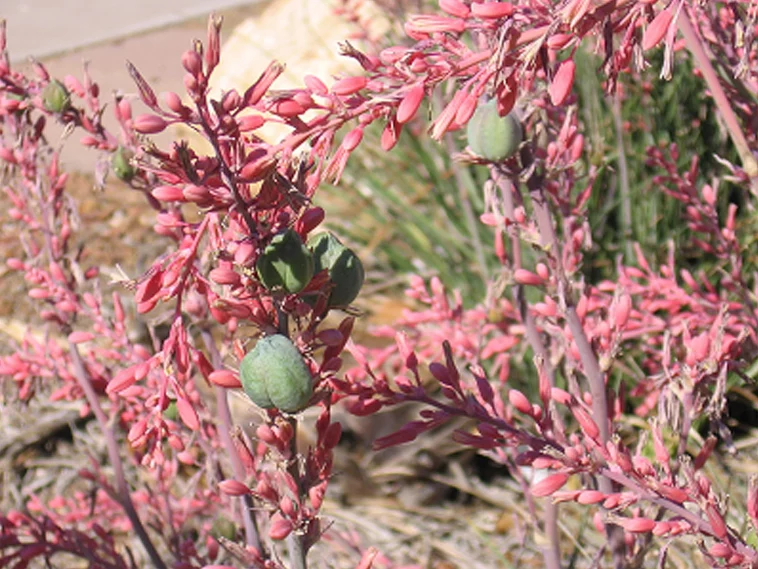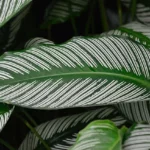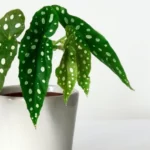Table of Contents
How To Care For Your Red Yucca
The red yucca is a gorgeous pink or red desert plant that is found naturally in Texas and Mexico – where the sand is hot and the summers are long.
That being said, the red yucca is a pretty versatile plant that is capable of moving to locations that are definitely not quite so desert-y.
They are easy to care for and easy to manage, so adding this beautiful vibrant plant to your garden is definitely something you should consider.
Just check out this helpful guide first so you can make sure that you’re able to give the red yucca everything it needs.
What does your red yucca require?
The red yucca is actually such a robust plant and it doesn’t just need to be restrained to desert environments any longer.
Below is a list of the basic requirements for your red yucca’s survival – following this list should keep them healthy for as long as they live!
Light
A red yucca will not grow without direct sunlight. It’s unfortunate, but having grown naturally in desert environments it’s understandable.
However, that doesn’t mean they need to be in the centre of your garden untouched by shade. In fact, despite there heritage, the red yucca can suffer leaf burn if placed in direct sunlight.
Opt instead for an area of the garden that receives plenty of sunlight (around 6 hours minimum) but that is at least partially shaded.
Temperature
A desert environment is known for its long hot days and its cold cold nights. So, the red yucca is actually pretty robust and can manage temperatures ranging from 30 to 90 degrees Fahrenheit.
Just make sure that it isn’t exposed to freezing cold temperatures that dip below that, as generally speaking you won’t find ice in the dessert, so you can’t expect the red yucca to survive it in your garden.
Soil
You can find a potting mixture that is designed for desert plants with relative ease. If you wish to create your own, mixing regular potting soil with sand should do the trick.
Remember the red yucca grows naturally in sand, so it needs some element of sand in the medium that it is growing in.
Humidity
As you can imagine, the desert isn’t particularly humid, and unfortunately anywhere with a humidity higher than 30% simply won’t allow these plants to grow at their best.
If you do live in humid conditions, the red yucca can be grown potted indoors, but you will need to open windows regularly to avoid humidity rising in your home.
If your local area never reaches humidity above 30%, then your red yucca will thrive outdoors. You’ll know if the humidity is too high by whether or not your plant is beginning to wilt.
How to water
These plants are used to long periods without water and can survive even the harshest of droughts.
If it rains around once per week where you live, you needn’t water your red yucca at all, as their roots are specifically used for storing excess water and hanging on to it for when the desert droughts come.
If your growing your plant indoors, simply watering once a week during growing season will do. During its more dormant period you can get away with watering only once every three weeks or so.
Make sure when watering you don’t make the soil/sand too wet as overwatering is certainly a common issue with any desert plant.
How to fertilize
Strictly speaking, you don’t need to fertilize your red yucca at all. The desert isn’t exactly renowned for its nutrient sand, so these plants don’t need any extra support in this department.
Fertilizing with a general purpose fertilizer that has been diluted to half strength won’t do any harm, and might encourage further growth during growing season, but why would you bother? With a plant that’s this easy to care for, just don’t bother complicating things unnecessarily!
Extra tips for red yucca care
This final section will, as always, cover pests and diseases, pruning, and propagation!
Pests and Diseases
Interestingly, the red yucca is one of the few plants that have a pest specifically known to attack the plant, and only that plant.
Red yucca bugs, as they are most commonly known, are tiny red insects that feed on the plants sap in the leaves. Adults and nymphs alike chew through the leaves to reach the sap, causing damage to the red yucca plant.
You’ll noticed damaged and yellowing leaves when these pests are present. To stop them though, you need only wipe the plant down with warm soapy water and a damp cloth. You will need to get every single part of the plant to stop them though, so be thorough!
In terms of diseases, fungal root rot is common. This comes from people inadvertently watering their plant too much, placing the plant in a dense soil that is unsuitable, or planting outdoors in an area prone to rainfall.
If it has started, stop watering immediately! This might save your plant, but it isn’t guaranteed. To prevent root rot though, simply follow the advice on watering your red yucca and there won’t be any issues.
Pruning
The only real pruning that needs to take place for the red yucca is in late winter. Wait until you notice any dead or damaged foliage from the winter months, and simply snip these off with some sheers.
This will encourage new growth for the summer, and leave your plant looking healthy again.
Propagation
Propagating the red yucca is best done through a method known as clump division. Simply remove the offshoots from the base of the plant by separating them from the tangled roots of the parent plant.
Repot this new plant in well draining soil and water regularly. Then simply follow the guide above for caring for the plant once it has rooted effectively.
The above guide should highlight how easy desert plants are to care for if you can offer them the right environment.
The key is not to overwater them and remember their natural environment, and your plant should be healthy even years from now!



